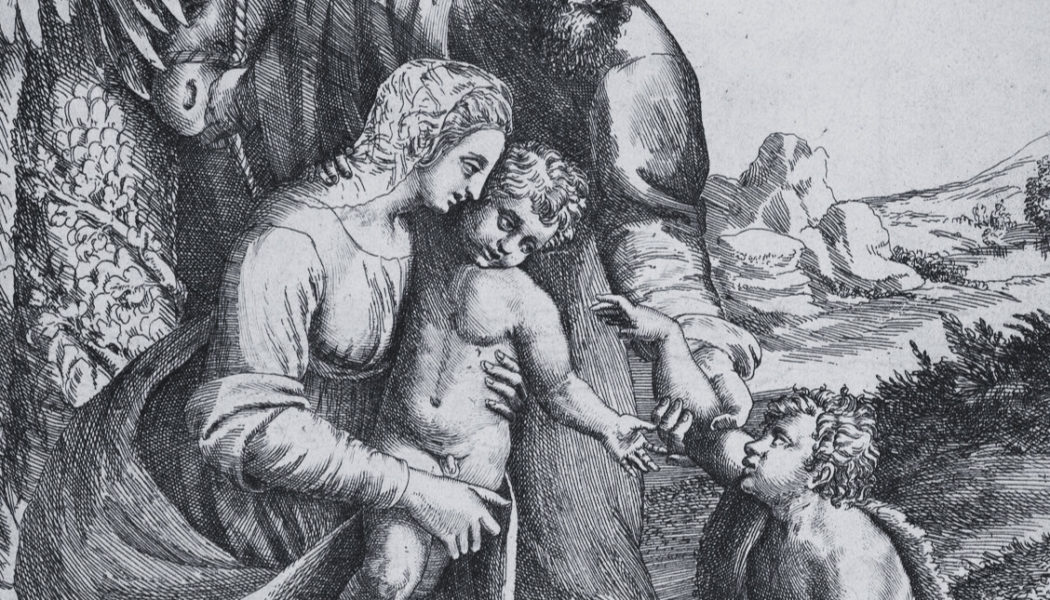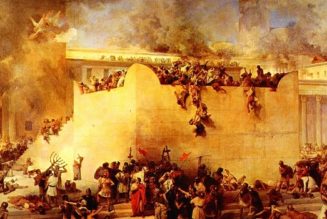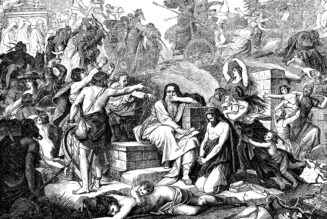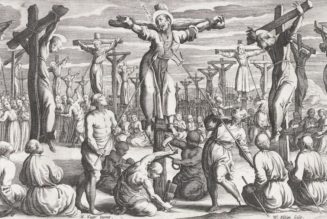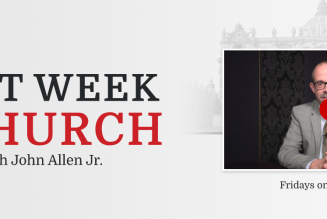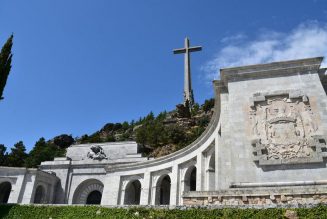By Clement Harrold

Sometimes we Catholics can struggle with the emphasis the New Testament places on the figure of St. John the Baptist. What makes this quirky, locust-eating prophet such an important figure? To answer this question, it’s worth reflecting on what Jesus Himself says about John the Baptist:
I tell you, among those born of women none is greater than John; yet he who is least in the kingdom of God is greater than he. (Lk 7:28)
In this verse, Jesus discloses a twofold reality: first, John is the fulfillment and indeed the greatest of all the Old Testament prophets; but secondly, even the greatest figures of the Old Covenant lack the depth of spiritual riches available to those of us living in the New Covenant.
What makes John the Baptist so amazing, therefore, is that he was the greatest possible saint that he could be. Sure, he didn’t have the Eucharist or the pope or the New Testament, but within the confines of what his Jewish faith offered, he showed himself to be perfectly conformed to the will of God. It’s for this reason that he was chosen by God to be the connecting bridge between the Old and the New, and to him was given the extraordinary privilege of preparing the way of the Lord (see Jn 1:23).
Although it isn’t dogmatically defined, Catholic tradition has long held that John the Baptist never committed any actual sins. Unlike Our Lady, of course, he was still conceived with original sin. But the traditional understanding is that after he danced for joy in Elizabeth’s womb (see Lk 2:44)—a kind of in utero baptism—he never fell into any personal sin. For the great English Cardinal St. John Henry Newman, it was this sinless purity of John the Baptist which explains why the Church celebrates his birthday each year on June 24th:
Yet, as soon as Christ, his Lord and Saviour, came to him, and Mary saluted his own mother, Elizabeth, forthwith the grace of God was given to him, and the original guilt was wiped away from his soul. And therefore it is that we celebrate the nativity of St. John; nothing unholy does the Church celebrate; not St. Peter’s birth, nor St. Paul’s, nor St. Augustine’s, nor St Gregory’s, nor St. Bernard’s, nor St Aloysius’s, nor the nativity of any other Saint, however glorious, because they were all born in sin. She celebrates their conversions, their prerogatives, their martyrdoms, their deaths, their translations, but not their birth, because in no case was it holy. Three nativities alone does she commemorate, our Lord’s, His Mother’s, and lastly, St. John’s. (Newman, “Purity and Love”)
Interestingly, the July 24th celebration of the Solemnity of the Nativity of St. John the Baptist is one of the oldest events on the Church’s calendar, and St. Augustine helps explain the appropriate symbolism behind the feast’s timing.
Falling just after the summer solstice, the Baptist’s birthday marks the moment when the long summer days begin to get shorter; in this way, nature herself embodies the truth of his declaration concerning Jesus: “He must increase, but I must decrease” (Jn 3:30). While the daylight decreases following John the Baptist’s birthday, it begins to increase again following the winter solstice, which falls just before Christ’s own birth at Christmas.
In the Middle Ages, St. John’s Eve, beginning at sunset on June 23rd, became a huge annual occasion. Fire lighting formed an important part of the celebration, calling to mind John the Baptist’s prophecy that Jesus “will baptize you with the Holy Spirit and with fire” (Mt 3:11). Fires are reminiscent, too, of Zechariah’s inspired words about the spiritual dawn which his son’s life would usher in (see Lk 1:78-9). In the Roman Ritual, there is even an ancient blessing which can be prayed over the fire, as well as prayers for the faithful to recite, and a beautiful hymn to sing.
Another essential component in appreciating the greatness of John the Baptist is to understand his connection to the prophet Elijah. This is significant, because ancient Jewish belief held that Elijah would return shortly before the “day of the Lord,” when the long-awaited Messiah would finally arrive (see Mal 4:5-6; Lk 1:16-17). Although John the Baptist is forced to clarify at one point that he is not Elijah reincarnated in the flesh (see Jn 1:21), we know from the Gospels that he is the new Elijah (see Mt 17:9-13) in a typological sense.
Not only does John the Baptist dress in a way reminiscent of the old prophet (see Mt 1:4; 2 Kgs 1:8), but much more importantly he sees his mission as paving the way for One to come, just as Elijah paved the way for Elisha, the one who would receive a double portion of his spirit (see 2 Kgs 2:9). Hence John the Baptist is the new Elijah, and Jesus is the new Elisha.
In the Catechism of the Catholic Church, there is a beautiful section which reminds us that, “In John’s sight, the Spirit thus brings to completion the careful search of the prophets and fulfills the longing of the angels” (§719). Through his constant “yes” to God, this courageous man helped usher in the New Covenant for which his beloved Israel had yearned for so many centuries.
Amidst trials and persecution, John the Baptist learnt firsthand what it means to live in a hostile and threatening world where the religious authorities were no less corrupt than the civil powers. In the end, he paid the ultimate price, sacrificing his life for the sake of God’s law. In our own confused and broken world, we should know that John the Baptist desires to be our friend, even as he continues in his lifelong mission of pointing us to Christ.
Further Reading:
https://www.catholic.com/magazine/online-edition/happy-birthday-baby-baptist
Clement Harrold is a graduate student in theology at the University of Notre Dame. His writings have appeared in First Things, Church Life Journal, Crisis Magazine, and the Washington Examiner. He earned his bachelor’s degree from Franciscan University of Steubenville in 2021.
You Might Also Like
Angels and saints. Catholics tend to think of them as different from the rest of us. They’re cast in plaster or simpering on a holy card, performing miracles with superhero strength, or playing a harp in highest heaven.
Yet they are very near to us in every way. In Angels and Saints: A Biblical Guide to Friendship with God’s Holy Ones, Scott Hahn dispels the false notions and urban legends people use to keep the saints at a safe distance. The truth is that Jesus Christ has united heaven and earth in a close communion. Drawing deeply from Scripture, Dr. Hahn shows that the hosts of heaven surround the earthly Church as a “great cloud of witnesses.” The martyrs cry out from heaven’s altar begging for justice on the earth. The prayers of the saints and angels rise to God, in the Book of Revelation, like the sweet aroma of incense.
